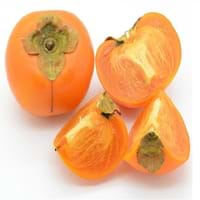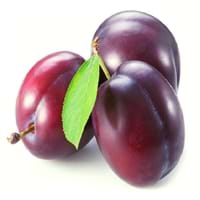Health Benefits
Cancer prevention, Heart care, Heat stroke treatment, Improves eye vision, Weight loss properties
Cancer prevention, Cures gastro-intestinal troubles, Heart care, Increase in haemoglobin, Prevents diabetes
General Benefits
Anti-inflammatory properties, Boosts immune system, Cures cough, Digestive aid, Fights against infections, Improves blood circulation
Anti-inflammatory properties, Boosts immune system, Digestive aid, Eye care, Flu treatment, Helps in weight loss, Maintains healthy cholesterol level, Treatment of common cold
Skin Benefits
Anti-aging benefits, Brightens and lightens complexion, Reduces wrinkles
Anti-aging benefits, Brightens and lightens complexion, Reduces wrinkles, Skin revitalization, Treatment of dark spots
Hair Benefits
Promotes longer and healthier hair, Protects hair
Prevents hair loss, Promotes longer and healthier hair, Protects hair, Remedy for split ends, Treatment of dandruff
Allergy Symptoms
Abdominal pains, Anaphylaxis, Inflammation
Abdominal pains, Anaphylaxis, Vomiting
Side Effects
Diarrhoea, Might affect blood pressure level
Allergic reaction
Best Time to Eat
Along with meal, As a snack in the late afternoon, Don't consume at night and before bed, Morning time (before lunch)
As a snack in the late afternoon, Eat the fresh ones, avoid mixing with any other foods, don't eat after meal., Morning time (before lunch)
Vitamin B5 (Pantothenic Acid)
Not Available
Vitamin C (Ascorbic Acid)
Vitamin K (Phyllochinone)
Calories in Fresh Fruit with Peel
Calories in Fresh Fruit without Peel
Not Available
Not Available
Calories in Frozen Form
Not Available
Calories in Canned Form
Not Available
Type
Berry, Tree fruit
Tree fruit
Season
Autumn, Winter
Summer
Varieties
Fuyu, Jiro, Gosho, Suruga, Hiratanenashi, Hachiya, Aizumishirazu, Yotsumizo, Yokono, Costata, Ormond and Tamopan
Victoria, President, Czar, Ariel, Avalon and Oullins Gage
Color
Orange, Red, Yellow
Pink, Purple, Red
Inside Color
Orange
Yellow
Taste
Sweet
Juicy, Sweet, Tart
Origin
Burma, China, India, Japan
Caucasus
Soil Type
Sandy loam, Well-drained
Clay, Loam, Sandy loam
Climatic Conditions
Can tolerate wide range of climates
Cold
Facts about
- Unripe persimmons contain lots of tannin which is used to brew sake & to preserve wood in Japan.
- A small non-edible fruit of persimmon tree is crushed with water, the solution is painted on paper & used to repel mosquitoes.
- In china, plums are used for production of wine.
- A chemical called amygdalin found in plum seeds, turns into toxic compound in human body.
- Plum tree produces fruit 3-5 yrs after planting.
Spirits
Not Available
Yes
Cocktails
Not Available
Yes
Other Countries
Azerbaijan, Brazil, Israel, Italy, Japan, Pakistan
Bosnia, Chile, India, Iran, Italy, Romania, Serbia, Turkey, United States of America
Top Importer
United States of America
United Kingdom
Botanical Name
Diospyros kaki
Prunus domestica
Synonym
Not Available
Not Available
Subkingdom
Tracheobionta
Tracheobionta
Division
Magnoliophyta
Magnoliophyta
Class
Magnoliopsida
Magnoliopsida
Subclass
Dillenhidae
Rosidae
Family
Ebenaceae
Rosaceae
Species
D. kaki
P. domestica
Generic Group
Not Available
Rose
Compare Japanese Persimmon and Plum
It is important compare Japanese Persimmon and Plum as both the fruits have a different nutritional value. Their comparison can be done on the basis of their vitamin and mineral content, calories, benefits as well as characteristics, making it easier for us to choose the best fruit for our diet. Their general health benefits are as follows:
Japanese Persimmon Benefits: anti-inflammatory properties, boosts immune system, cures cough, digestive aid, fights against infections and improves blood circulation.
Plum Benefits: anti-inflammatory properties, boosts immune system, digestive aid, eye care, flu treatment, helps in weight loss, maintains healthy cholesterol level and treatment of common cold.
Fruits are also used as a remedy for various hair problems. The hair benefits of Japanese Persimmon are: promotes longer and healthier hair and protects hair and hair benefits of Plum are: prevents hair loss, promotes longer and healthier hair, protects hair, remedy for split ends and treatment of dandruff. Some fruits are known to cause allergic reactions. The allergy symptoms of first fruit are: abdominal pains, anaphylaxis and inflammation and the symptoms of second fruit are: abdominal pains, anaphylaxis and vomiting. Get sorted Japanese Persimmon vs Plum comparison with the help of fruit comparison tool by fruitvs.com.









